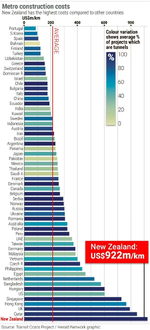- Thread starter
- #2,621
it’s all rumours until you read it in the papersCome on Wiz.
Don't leave us in the dark.
What are your sources?
What areas.
Someone with your status must be able give us a heads up.
Come on mate.

Follow along with the video below to see how to install our site as a web app on your home screen.
Note: This feature may not be available in some browsers.
it’s all rumours until you read it in the papersCome on Wiz.
Don't leave us in the dark.
What are your sources?
What areas.
Someone with your status must be able give us a heads up.
Come on mate.

And this same chestnut comes out every time there is a change in political party running govcoit’s all rumours until you read it in the papers
Oh no. I heard it here first.it’s all rumours until you read it in the papers
The books are so bad, landlords are getting a 3B package rushed through?!!? Hahaha fucking pull the other one.This could get interesting. It appears there are major financial issues that have been sprung on Nicola Willis. And this is not political point scoring as the finger is being pointed at Treasury rather than Robertson.
I know their is always the ‘last govt left the books in bad shape’ but it’s sounds a bit more than that?
Whispers of an inquiry with the ability to call under oath the former Minister of Finance, and Treasury officials, such is the nasty financial surprises…
Political games or is there something worse?
And Mike King got 3 millionThe books are so bad, landlords are getting a 3B package rushed through?!!? Hahaha fucking pull the other one.
Like Schrodingers Putin… The mental gymnastics required to hold two diametrically opposed viewpoints as both true at the same time.
$6m per year!And Mike King got 3 million
But we are in the shit for money
Happens every change of government.
Amazing we still have so many gullible out there
TBF $3mil is probably a saving over bloated programs delivering fuck all.And Mike King got 3 million
But we are in the shit for money
Happens every change of government.
Amazing we still have so many gullible out there
True. My point was they didn't have problems finding it while claiming the books are fuckedTBF $3mil is probably a saving over bloated programs delivering fuck all.
Very true. Seymour and Winnie are cunning but I don’t think Luxon and Bishop could count to 20 with their shoes on. They are probably waiting for an adult to tell them what the numbers mean.True. My point was they didn't have problems finding it while claiming the books are fucked
Wondering what Butterbean and many other charities are thinking
Winnie promised to go down the Pike River site but never did because it was a no smoking area.i can’t lie, i good laugh out of this one. View attachment 4563

Surprisingly, an article in this just this morning. Is it just playing politics or something bigger to come:it’s all rumours until you read it in the papers
Personally, I thought it was an unnecessary and unneeded change. If you are struggling from a winter cold, take a few panadol and have a lie down. I would have thought the risks of pseudoephedrine outweigh the benefitsI haven’t read every comment on this thread, so if this has been discussed before excuse me.
The national government wants to change Pseudoephredine from prescription, only, to over the counter. Availability.
Its a cold decongestant cure but is also the main ingredient in speed, bennies, uppers. P.
Ram raids on Chemists?
Bulk loads from chemist warehouse?
Good idea?
I don’t think so.
comments?
I find that the Day/night tablets are great for me. Disappointed when they are not available.Lucky I very seldom need them .Personally, I thought it was an unnecessary and unneeded change. If you are struggling from a winter cold, take a few panadol and have a lie down. I would have thought the risks of pseudoephedrine outweigh the benefits
But I don't like taking them anyway as I can't sleep later on at night
I can't recall the electorate ever wanting to have them back
It’s just plain weird. They are effective at keeping you working if you have a cold and you can power through. But then again so is speed or P. They have a bounce back effect. Rest, time off and lemon honey works for me….it just seems a policy for big pharma - the US companies, but then again that’s what this government is about. Look at the way we’re trying to get American money in here and the hard on for the gun and tobacco lobby.Personally, I thought it was an unnecessary and unneeded change. If you are struggling from a winter cold, take a few panadol and have a lie down. I would have thought the risks of pseudoephedrine outweigh the benefits
But I don't like taking them anyway as I can't sleep later on at night
I can't recall the electorate ever wanting to have them back
I haven’t read every comment on this thread, so if this has been discussed before excuse me.
The national government wants to change Pseudoephredine from prescription, only, to over the counter. Availability.
Its a cold decongestant cure but is also the main ingredient in speed, bennies, uppers. P.
Ram raids on Chemists?
Bulk loads from chemist warehouse?
Good idea?
I don’t think so.
comments?